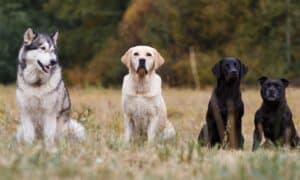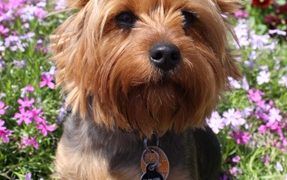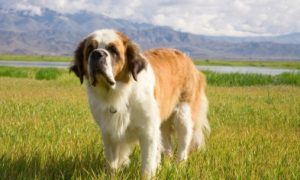“This post contains affiliate links, and I will be compensated if you make a purchase after clicking on my links.”
Description
The Mastiff is a popular breed of large, massive dog that originated in England. It belongs to the Working breed group which is remarkable for their guarding and water-rescuing functions. The breed has been developed for the purpose of becoming watch or guard dogs. Their coat is smooth, and may come in several different colors such as light fawn, golden fawn, silver, apricot, brindle, or tiger.
Height and Weight
The male members of the Mastiff breed normally stand about 30 to 34 in at the withers, and weigh around 165 to 220 lbs. Their female counterparts, on the other hand, usually have a height of approximately 27.5 to 32 in at the withers, and a weight of about 120 to 175 lbs.
Temperament

This gigantic breed is a powerful, muscular dog. Their dominance levels tend to vary, but they are usually called a Gentle Giant. Though the breed rarely barks, they tend to readily defend their family and territory. Although considered to be friendly, they naturally guard on their own whenever they sense danger. Mastiffs are confident and vigilant. Nonetheless, they are known to be patient and excellent with children.
The breed is intelligent, even-tempered, and docile. They tend to respond well to firm yet gentle patient training. Mastiffs are eager to please, and need plenty of human leadership. To keep them from becoming reserved with strangers, owners have to socialize them properly. In addition, the breed has the propensity to wheeze, drool, and snore loudly.
Grooming
The smooth coat of Mastiffs is easy to groom. Owners only need to brush it wipe over using a piece of chamois or toweling to reveal its gleaming finish. Bathe and dry shampoo the Mastiff whenever necessary. The breed tends to shed moderately.
Health Concerns
The Mastiff breed has an average lifespan of 5 to 10 years. Just like any other dog, this breed of large dog is also prone to suffer from several dog health problems. Some of these include hip dysplasia, bloat, gastric torsion, CHD, PPM, ectropion, elbow dysplasia, vaginal hyperplasia, cardiomyopathy, and progressive retinal atrophy.
Best Environment
With sufficient exercise, Mastiffs can do well in apartment-living. They are moderately inactive indoors; making small yard space fine for them. Nonetheless, members of the breed tend to be lazy. Providing them with regular exercise is highly recommended to make them happy. Daily walks performed on a regular basis should be taken by the Mastiff pet. This will help them release their physical and mental energy properly. While out on a walk, the dog has to be behind the owner to establish human leadership and dominance. In addition, Mastiffs have to be leashed in public all the time.


















